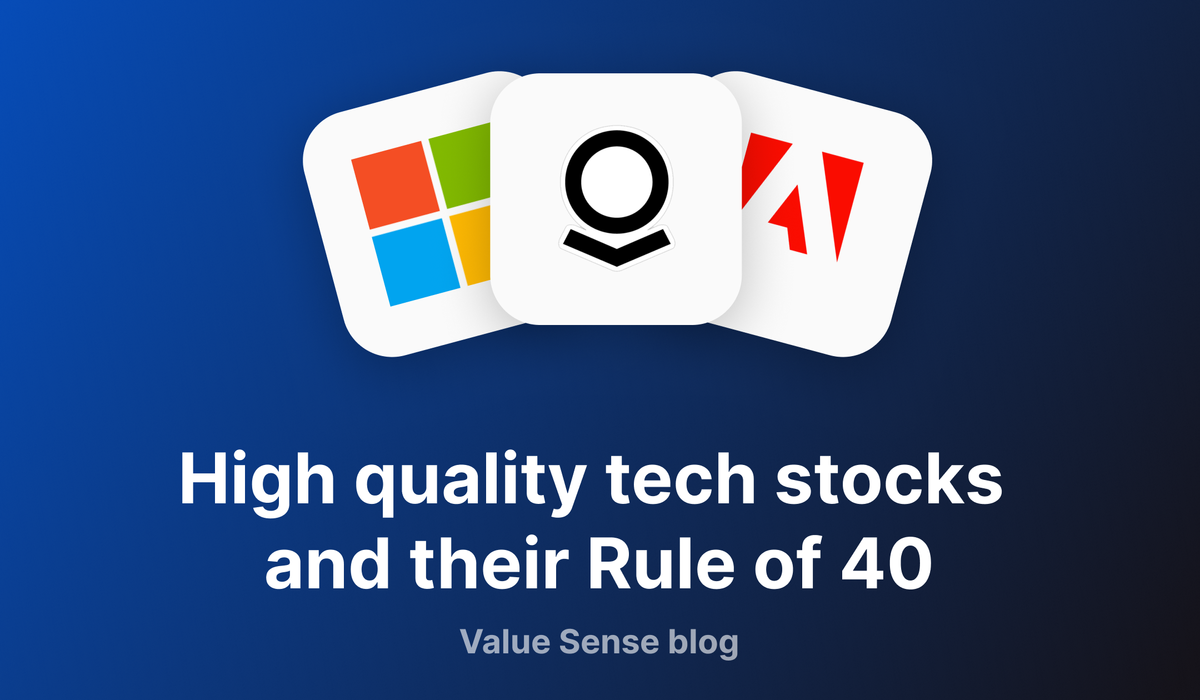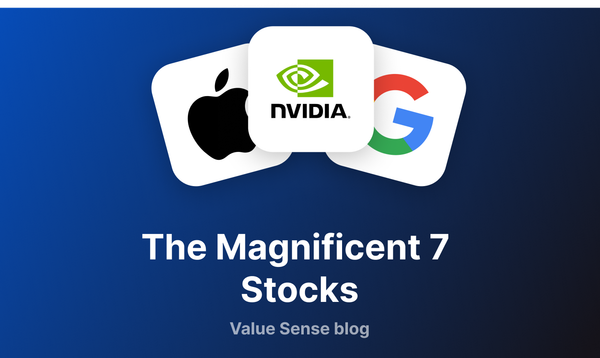Rule of 40 Analysis: High-Performance Tech Stocks Delivering Exceptional Growth and Profitability in 2025

Welcome to Value Sense Blog
At Value Sense, we provide insights on the stock market, intrinsic value tools, and stock ideas with undervalued companies. You can explore our research products at valuesense.io and learn more about our approach on our site.
Key Takeaways
- NVIDIA leads technology sector with extraordinary 163.3% Rule of 40 score
- Semiconductor companies dominate high-performance tech stock rankings
- Established technology platforms demonstrate sustainable operational efficiency
- Rule of 40 metric provides valuable insight for technology investment decisions
Understanding the Rule of 40: A Critical Technology Stock Metric
The Rule of 40 has emerged as a fundamental analytical framework for evaluating technology companies' operational health. This metric, representing the sum of revenue growth rate and free cash flow margin, provides investors with a comprehensive assessment of a company's ability to balance growth with profitability—a crucial equilibrium in technology sector investments.
Companies exceeding the 40% threshold demonstrate exceptional operational efficiency and financial resilience, typically commanding premium valuations in both bull and bear market environments. This metric has gained particular relevance in the current market landscape where quality metrics increasingly drive investor allocation decisions.
Elite Technology Stocks: Rule of 40 Performance Analysis
Recent data compiled by Value Sense reveals remarkable performance differentials among leading technology companies:
| Company | Rule of 40 Score | Sector |
|---|---|---|
| NVIDIA ($NVDA) | 163.3% | Semiconductors |
| TSMC ($TSM) | 98.2% | Semiconductors |
| Broadcom ($AVGO) | 79.3% | Semiconductors |
| Palantir ($PLTR) | 69.1% | Software |
| Microsoft ($MSFT) | 63.0% | Software |
| ServiceNow ($NOW) | 61.3% | Software |
| Adobe ($ADBE) | 53.0% | Software |
| Intuit ($INTU) | 47.5% | Software |
| Qualcomm ($QCOM) | 46.1% | Semiconductors |
| Salesforce ($CRM) | 43.3% | Software |
| ASML ($ASML) | 42.1% | Semiconductor Equipment |
Sector-Specific Insights and Investment Implications
Semiconductor Sector Dominance
The semiconductor industry demonstrates particularly robust operational metrics, with NVIDIA, TSMC, and Broadcom achieving exceptional Rule of 40 scores. This performance validates the structural advantages these companies possess within the artificial intelligence and high-performance computing ecosystems.
NVIDIA's 163.3% score represents extraordinary performance across both growth and profitability dimensions, explaining its market valuation premium and sustained stock price appreciation. TSMC's 98.2% score reflects its critical position in advanced semiconductor manufacturing, while Broadcom's 79.3% highlights its successful diversification strategy.
Software Platform Evolution
Established software platforms including Microsoft, Adobe, and Intuit demonstrate how scale advantages translate to consistent free cash flow margin expansion while maintaining respectable growth rates. ServiceNow's 61.3% score validates its enterprise workflow automation thesis, while Salesforce's position above the 40% benchmark confirms its continued relevance in customer relationship management solutions.
Emerging Technology Leaders
Palantir's 69.1% score represents a significant inflection point, validating its commercial expansion strategy and improved operational efficiency. This metric supports the investment thesis that Palantir has successfully transitioned from government-focused operations to a balanced commercial and public sector model.
Investment Framework: Evaluating Sustainability of Operational Excellence
The uniform Rule of 40 outperformance across this cohort indicates potential valuation resilience despite macroeconomic uncertainties. Historical analysis suggests companies maintaining elevated Rule of 40 scores typically deliver superior shareholder returns over multi-year horizons.
Key considerations for evaluating the sustainability of these metrics include:
- Competitive Positioning: Assessment of moat characteristics and competitive threats
- Scaling Dynamics: Evaluation of margin expansion potential at increased revenue scales
- Capital Allocation Strategy: Analysis of reinvestment opportunities versus shareholder returns
- Market Expansion Potential: Examination of total addressable market evolution and penetration rates
Conclusion: Strategic Investment Considerations
The Rule of 40 provides valuable analytical insight but requires contextualization within broader fundamental analysis. Investors should consider additional metrics including:
- Return on invested capital (ROIC)
- Customer acquisition cost (CAC) to lifetime value (LTV) ratios
- Research and development efficiency
- Management capital allocation track record
Companies consistently exceeding the Rule of 40 benchmark typically represent quality investments meriting closer analysis. The current cohort's exceptional performance suggests structural advantages rather than cyclical factors, potentially indicating sustainable competitive differentiation.
This analysis is based on data compiled by Value Sense as of April 2025. Investors should conduct thorough due diligence before making investment decisions.
Explore More Investment Opportunities

For investors seeking undervalued companies with high fundamental quality, our analytics team provides curated stock lists:
📌 50 Undervalued Stocks (Best overall value plays for 2025)
📌 50 Undervalued Dividend Stocks (For income-focused investors)
📌 50 Undervalued Growth Stocks (High-growth potential with strong fundamentals)
🔍 Check out these stocks on the Value Sense platform for free!
More Articles You Might Like
📖 S&P 500 Fair Value Heatmap
📖 9 Undervalued Low Debt Stocks to Buy - 2025
📖 9 low P/E & high ROIC stocks for 2025
FAQ: Rule of 40 Analysis for Technology Stocks
What is the Rule of 40?
The Rule of 40 is a performance metric for technology companies that combines revenue growth rate and free cash flow margin. A score above 40% generally indicates strong operational performance.
Why do semiconductor companies score so highly?
Semiconductor companies benefit from strong demand drivers related to artificial intelligence, cloud computing, and digital transformation, allowing them to combine high growth rates with substantial margins.
Is the Rule of 40 applicable to all technology companies?
While particularly relevant for software and semiconductor companies, the Rule of 40 provides valuable insight for any technology business where balancing growth and profitability is critical.
How does the Rule of 40 correlate with stock performance?
Historical analysis suggests companies maintaining Rule of 40 scores above 40% typically outperform technology sector benchmarks over multi-year investment horizons.
Should investors use the Rule of 40 as their primary investment criteria?
The Rule of 40 should be considered as one component of comprehensive fundamental analysis rather than a standalone investment criterion.





